
[p. 118]
CHAPTER XVI THE MOUNTAIN MEADOW MASSACRE — AN ENTIRE WAGON TRAIN WIPED OUT
Brigham Young seemed to lose his power and influence in the Church after the Mountain Meadows massacre. This happened previously to the disruption in the Church and was, indeed, one of the main causes of the trouble. Brigham Young was supposed to be one of the main instigators of that awful crime. The following is the report of the massacre taken from the Utah Magazine:
"In the summer of 1857 a train of emigrants from Arkansas, on their way to California, entered Salt Lake City. It was perhaps the wealthiest and most populous train that ever entered the valley, bound for California. It numbered nearly one hundred fifty persons, men, women and children; four hundred head of cattle and seventy—five horses. It was a rich train and carried money, jewelry, household goods, pianos, books, and fireside penates, with which to add comfort and beauty to their new homes on the Pacific.
"They were told that snows on the Sierras would
prevent their passage by the northern route. They,
therefore, resolved to pass down through the southern
settlements of Utah, and enter California by the
southern route. It was not only a wealthy train but

[p. 119]
a highly respectable, peaceable, and Christian people,
who frequently held religious services.
"Hitherto, Salt Lake City had been the great recruiting station on the barren road to California. Jaded and weary trains of men and animals found rest and recuperation in this oasis of the desert high way. To their great surprise, this Arkansas train found, on reaching Salt Lake City, that nothing could be procured from the Mormons for love nor money. Their gold and silver, their cattle, nor aught that they possessed, could purchase sufficient food to keep them from starvation. Not only were they denied food but rest. They were peremptorily ordered to break camp on the Jordan and depart from Salt Lake City. Wearily they passed down through the villages that blossomed at the foot of the Wasatch, each proving as inhospitable as the other.
"The corn had ripened, the grain had all been
harvested, every granary was filled to repletion, for
the year had been exceptionally proline; yet money
had lost its purchasing power, for everywhere food
was denied. At American Fork, Battle Creek, Provo,
Springville, Spanish Fork, Payson, Nephi, and Fillmore City they received the same harsh treatment.
And, not until their arrival in Cedar City in a famished condition were they able to obtain a pound of
grain for man or beast. The command of authority
had preceded them. The second in command of the
church, George A. Smith, the Prophet’s first counselor,
had preached to the Mormons in every settlement,
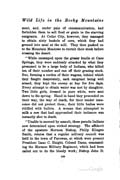
[p. 120]
and, under pain of excommunication, had
forbidden them to sell food or grain to the starving
emigrants. At Cedar City, however, they managed
to obtain sixty bushels of corn, which they had
ground into meal at the mill. They then pushed on
to the Mountain Meadows to recruit their stock before crossing the desert.
"While encamped upon the grassy knolls at Cane Springs, they were suddenly attacked by what they presumed to be a large body of Indians, who killed ten of their number and ran off their grazing stock. But, forming a cordon of their wagons, behind which they fought desperately, each emigrant being well armed, they kept the enemy at bay for five days. Every attempt to obtain water was met by slaughter. Two little girls, dressed in pure white, were sent down to the spring. Hand in hand they proceeded on their way, the way of death, for their tender innocence did not protect them; their little bodies were riddled with bullets. A woman that attempted to milk a cow that had approached their inclosure was instantly shot to death.
"Unable to succeed by assault, these pseudo Indians
now determined upon wicked strategy. The affidavit
of the apostate Mormon Bishop, Philip Klingen
Smith, relates that a regular military council was
held in the town of Parowan, at which were present
President Isaac C. Haight, Colonel Dame, commanding
the Mormon Military Regiment, which had been
called out to do the bloody work; Bishop John D.
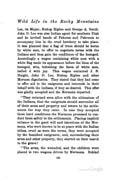
[p. 121]
Lee, its Major; Bishop Rigbee and George A. Smith.
John D. Lee was also Indian agent for southern Utah
and he invited bands of Pahutes and Pahvents to
accompany him in the cruel butchery to take place.
It was planned that a flag of truce should be borne
by white men, to offer to negotiate terms with the
Indians and thus gain the confidence of the besieged.
Accordingly a wagon containing white men with a
white flag made its appearance before the lines of the
besieged, who, beholding the faces of white men,
hailed it with joy. This wagon contained J. B.
Haight, John D. Lee, Bishop Rigbee and other
Mormon dignitaries. They stated that they had come
to offer aid to the emigrants and intercede in their
behalf with the Indians, if they so desired. This offer
was gladly accepted and the Mormons departed.
"They returned soon after with the ultimatum of the Indians, that the emigrants should surrender all of their arms and property and return to the settlements the way they came. In case they accepted these hard conditions the Mormons promised to conduct them safely to the settlements. Placing implicit reliance in the good will and intentions of the Mormons, who were known to be at peace with the Indian tribes, cruel as were the terms, they were accepted by the famished emigrants; and, surrendering their arms and other property, they started on their march to the grave!
"The arms, the wounded, and the children were
placed in two wagons driven by Mormons. Behind
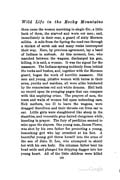
[p. 122]
them came the women marching in single file; a little
back of them, the starved and worn out men; and,
immediately in their rear, a guard of sixty Mormon
militia. A mile from the Spring the road ran through
a thicket of scrub oak and many rocks intercepted
their way. Here, by previous agreement, lay a band
of Indians in ambush. At this moment, Lee, who
marched between the wagons, discharged his gun,
killing, it is said, a woman. It was the signal for the
massacre. The Indians sprang suddenly from behind
the rocks and bushes, and, together with the Mormon
guard, began the work of horrible massacre. Old
men and young, pitiable women with babes in their
arms, youths and maidens, all were alike butchered
by the remorseless red and white demons. Hell hath
no record upon its avenging pages that can compare
with this unpitying crime. The prayers of men, the
tears and wails of women fell upon unheeding ears.
Sick mothers, too ill to leave the wagons, were
dragged therefrom and their throats cut from ear to
ear. Little girls were slaughtered like sheep in the
shambles, and venerable gray—haired clergymen while,
kneeling in prayer. The fury of perdition seemed to
seize upon the slayers. One young man, James Pierce,
was shot by his own father for protecting a young,
beseeching girl who lay crouched at his feet. A
beautiful young girl threw herself into the arms of
the son of John D. Lee, who attempted to shield
her with his own body. His inhuman father bent his
head aside and plunged his dripping dagger into her
young heart. All of the little children were killed

[p. 123]
save those too young to remember. Such was the
order. Fifteen alone survived, the eldest but two
and a half years old.
"In an incredibly short space of time one hundred twenty—eight men, women and children, unarmed and defenseless, weak, weary, worn and famished, were butchered by those inhuman monsters who, under the guise of friendship and human sympathy, had decoyed them into this terrible slaughter pen.
"Eight days after the massacre people who visited the field of death saw the bodies of the slain strewn upon the ground and heaped in piles. Some were stabbed, many shot, while others, principally women, had their throats cut. The wolves and ravens had lacerated the bodies of all save one, that of a beautiful, well—formed woman with long flowing locks of hair. For some unexplained reason her body had escaped the print of wolves’ teeth. A single bullet had pierced her side. There was no clothing left on any of the bodies, save one torn stocking which clung to the ankle of one of the men; their bloody clothing having been torn from their mutilated bodies and sold at auction by the order of the church authorities at Cedar City, Utah.
"Most of the bodies had been thrown into three
piles, distant two and a half rods from each other.
The most signiicant fact connected with the dead
was that not a scalp was taken. Those acquainted
with Indian character know full well their savage
instincts. After a continuous battle of five days,
resulting finally in the capture and slaughter of their
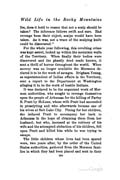
[p. 124]
foe, does it hold to reason that not a scalp should be
taken! The inference follows swift and sure. Had
revenge been their object, scalps would have been
taken. As it was, not a trace of the scalping knife
could be discovered."
For the whole year following, this revolting crime was kept secret, locked up within the mountain walls of the Territory. When finally their bodies were discovered and the ghastly deed made known, it sent a thrill of horror throughout the world. When secrecy was no longer available the Mormons declared it to be the work of savages. Brigham Young, as superintendent of Indian affairs in the Territory, sent a report to the Department at Washington alleging it to be the work of hostile Indians. It was declared to be the organized work of Mormon authorities, who sought to revenge themselves upon the people of Arkansas for the killing of Parley B. Pratt by McLean, whose wife Pratt had succeeded in proselyting and who afterwards became one of his wives at Salt Lake City. Pining for her children, she induced Pratt to accompany her back to Arkansas in the hope of obtaining them from her husband; but who, incensed at the robbery of his wife and the attempted abduction of his children, fell upon Pratt and killed him while he was trying to escape.
The little children whose lives had been spared
were, two years after, by the order of the United
States authorities, gathered from the Mormon families
in which they had been placed and sent to their

[p. 125]
friends at home. Two years after the Mountain
Meadow massacre the United States goverment
established a military camp north of the city on a
high bench overlooking the city, which was named
Camp Douglass, at which camp a regiment of soldiers
was stationed under the command of General Connors.
After this fewer murders were committed in
the Territory. Seldom, if ever, was an emigrant
train attacked and robbed, which the Mormons had
always claimed was done by the Indians. Brigham
Young’s "Destroying Angels" seemed to go out
of business.
The Mormon General Conference, which convenes twice a year, was in session the week that Thomas and party were in Salt Lake City. Large numbers of Mormons were in attendance from all parts of the Territory. Much information was, therefore, gained by them in regard to Mormonism and of Brigham Young and his numerous wives.
Brigham Young, the Prophet and President of the
Mormon Church, also the Governor of the Territory
of Utah, was a large, broad-shouldered man five feet
eight or ten inches in height. He had a large head
and wore a full beard. He looked to be a man of
strong will, not easily excited or discouraged. When
seen on the street he looked different from most of
the Mormon officials, especially in his dress. He wore
a tall silk hat and black cloth clothes. He wore a
gold watch and chain, and walked with a large
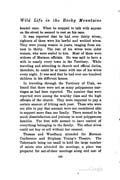
[p. 126]
gold-headed cane. When he stopped to talk with anyone
on the street he seemed to rest on his cane.
It was reported that he had over thirty wives; eighteen of them were his lawful and wedded wives. They were young women in years, ranging from sixteen to thirty. The rest of his wives were older women, who were sealed to him. Most of them were widows of Mormon officials. He was said to have a wife in nearly every town in the Territory. While traveling and attending to church and official duties, therefore, he could be at home with one of his wives every night. It was said that he had over one hundred children in his different homes.
In traveling through the Territory of Utah, we found that there were not as many polygamous marriages as had been reported. The number that were reported were among the wealthy class and the high officials of the church. They were required to pay a certain amount of tithing each year. Those who were not able to pay that amount were not considered able to support more than one family. There seemed to be much dissatisfaction and jealousy in most polygamous families. The first wife seemed to have control of everything belonging to the family. The other wives could not buy or sell without her consent.
Thomas and Woodbury attended the Mormon Conference and Brigham Young’s Theatre. The
Tabernacle being too small to hold the large number
of saints who attended the meetings, a place was
prepared for out—of—door meetings along and east of

[p. 127]
the Tabernacle. Seats for several thousand people
were prepared. A covering for shade was constructed
out of forks, poles and pine branches. At the north
end of the ground, a stand was erected large enough
to seat all of the officials and the twelve apostles of
the church.
Brigham Young being indisposed, Heber C. Kimble, the vice—president, presided and made the first talk. He did not announce any text, and his talk was mainly abusing the Gentiles and lauding the saints. It was more like a political meeting than a religious gathering. When he became tired of abusing the Gentiles and commenced praising the saints, his talk was frequently interrupted by "amens" from the entire congregation. One old lady, apparently about four score and ten years of age, in order to make it more emphatic, arose to her feet to say "amen," which she repeated several times.
All of those who do not belong to the Mormon Church are Gentiles. All of the speakers who followed Kimble spoke along the same lines. The speakers frequently asked those present to sanction what they said by saying "amen," which they heartily did.
The people at the Theatre were much more quiet
during the play and the order much better than at
the Conference, owing, perhaps, to the strict rules
posted on the outside as well as on the inside of the
building. Police, moreover, were stationed in all
parts of the building. Tickets for seats in all parts

[p. 128]
of the building were sold at the uniform price of one
dollar. The play, given by a New York company, was
considered a good one.
Brigham Young occupied his box on the right side of the stage, and was accompanied by eight or ten young women, who were supposed to be some of his wives. Heber C. Kimble, the vice president, occupied a box on the left side of the stage, with a number of young women.